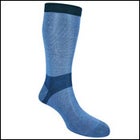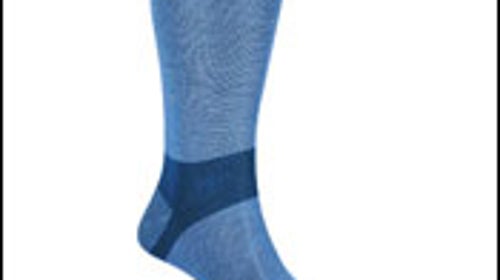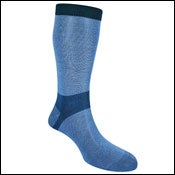Well, youve been fortunate if youre just now suffering from a hot spot after what I assume is an extended length of time hiking with a single layer of socks. Im a strong believer in the two-sock system, even with hiking socks that claim to be so effective that only a single layer is needed. That would be a wool sock such as those from SmartWool, the logic being that the merino wool absorbs so much moisture from your feet that friction is kept to a minimum. But I still like a liner sock.
Bridgedale Coolmax Sock Liners
 Coolmax Sock Liners
Coolmax Sock LinersI understand the idea behind the same-material-for-both-liner-and-main-sock theory. You want to avoid some kind of weird interaction between different materials. But Im not really aware of any prevailing wisdomconventional or otherwisethat dictates such a sock policy. In fact, I regularly hike with synthetic liner socks (I prefer those made from DuPont Coolmax or polypropylene; they run around $8 per pair) with wool socks such as the SmartWool Light Hiker ($15; smartwool.com) or Bridgedale Light Trail sock (also $15; bridgedale.com).
Besides, even wool” socks have a substantial amount of synthetic fabric in them, to help with wear and stretchiness. A SmartWool sock, for instance, is about 75 percent wool, with the rest nylon and something like Spandex.
Anyway, once you start putting socks on, keeping feet cool is always an issue. I like wool because its a pretty good temperature regulator, and it really does help keep feet dry. Wool liner socks also are available, of coursethose from SmartWool sell for about $10. And theyre really very good.
Youve seen our picks for 2007 Gear of the Year, and now the entire
���ϳԹ��� Summer Buyers Guide is online. Check out this years more than 400 must-have gear items, including footwear.


